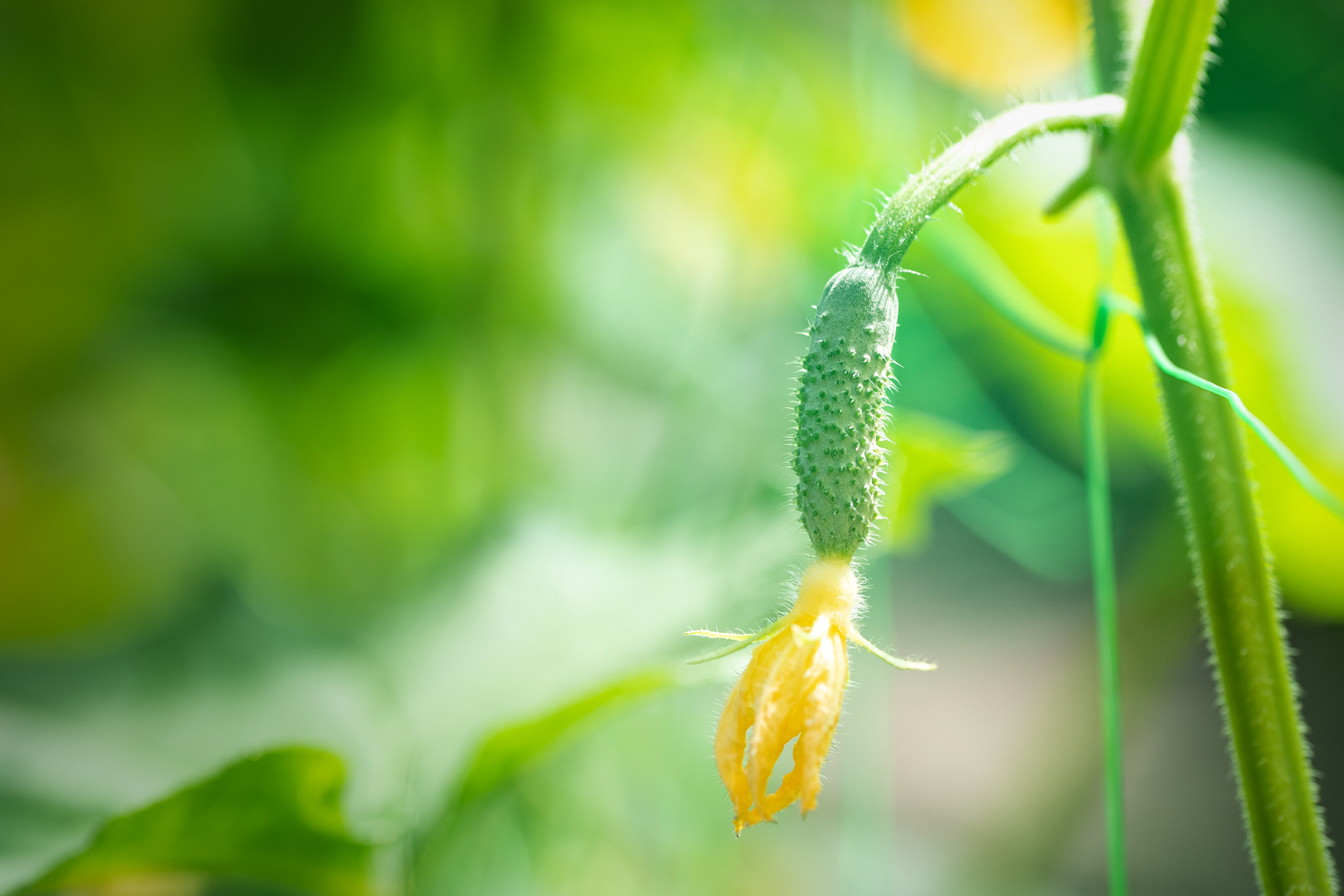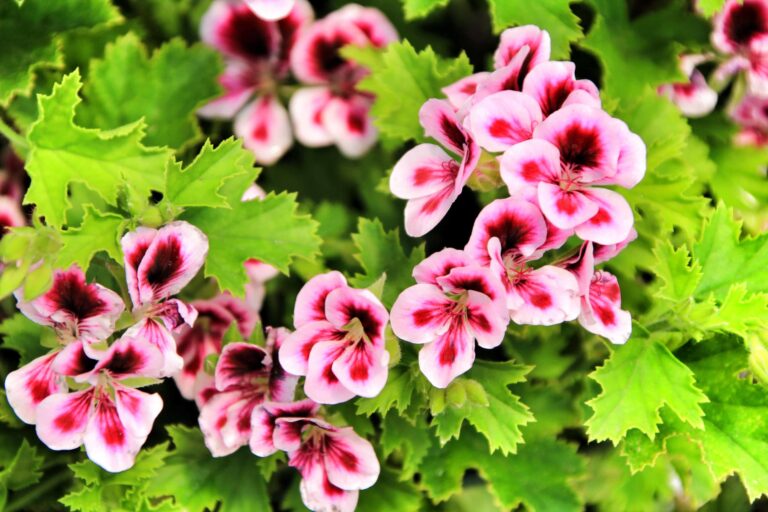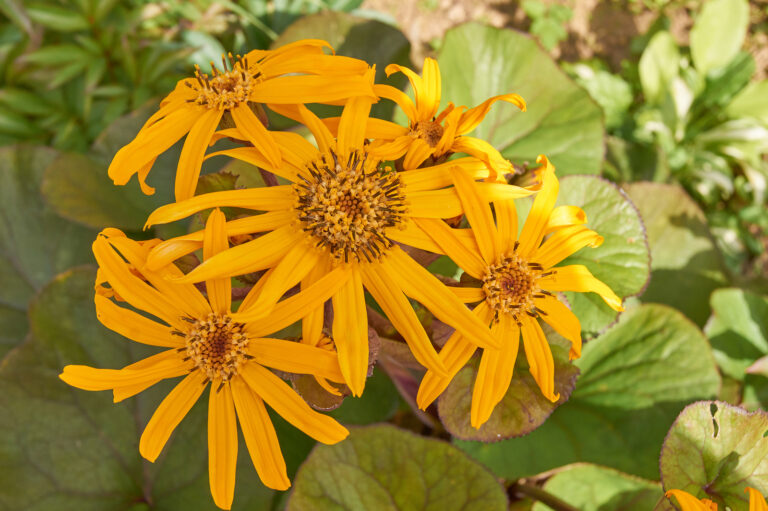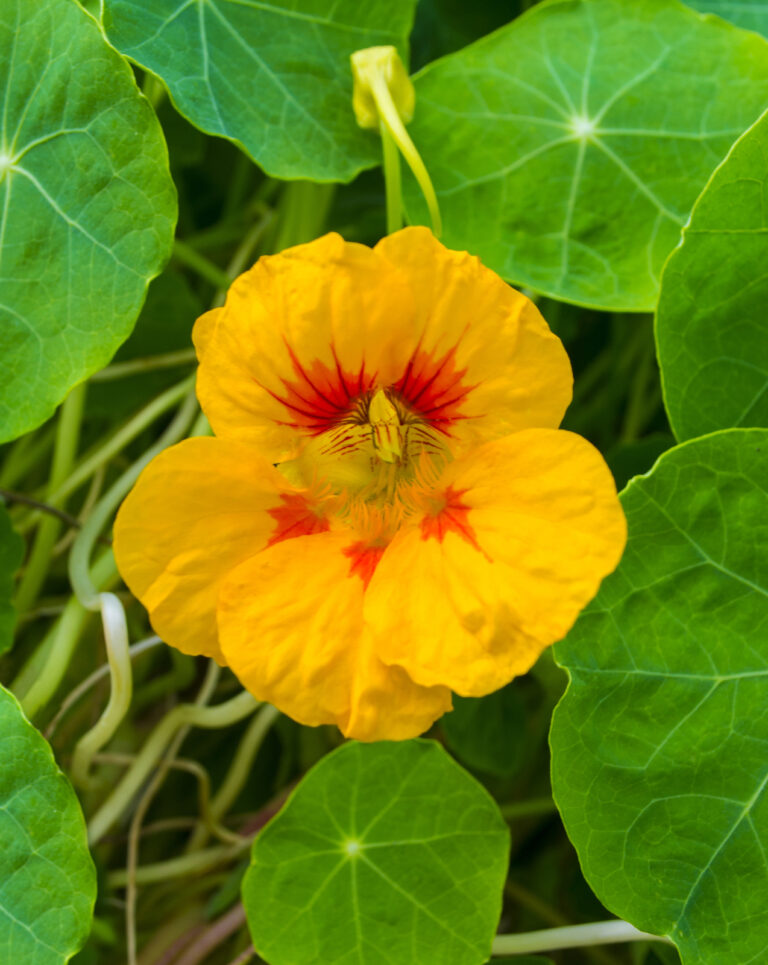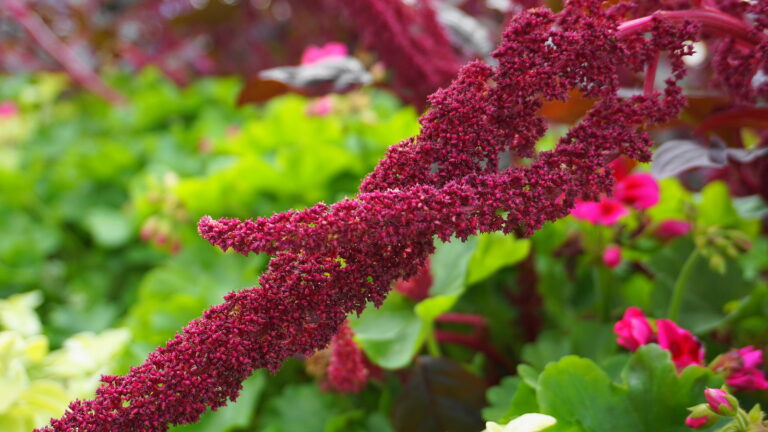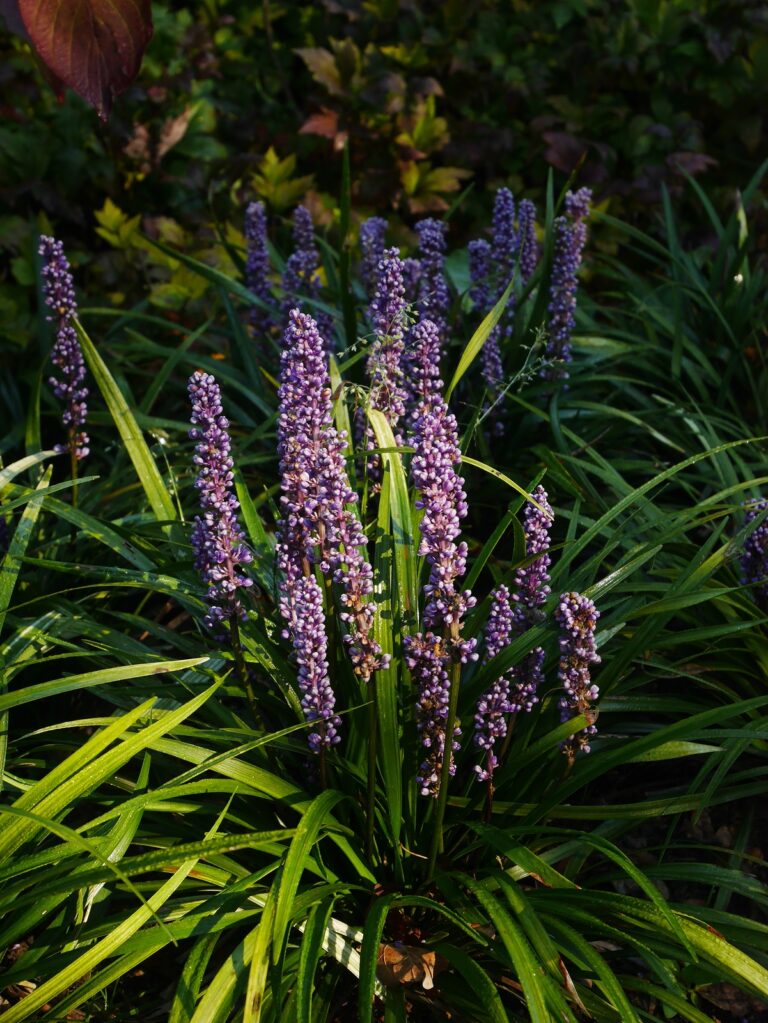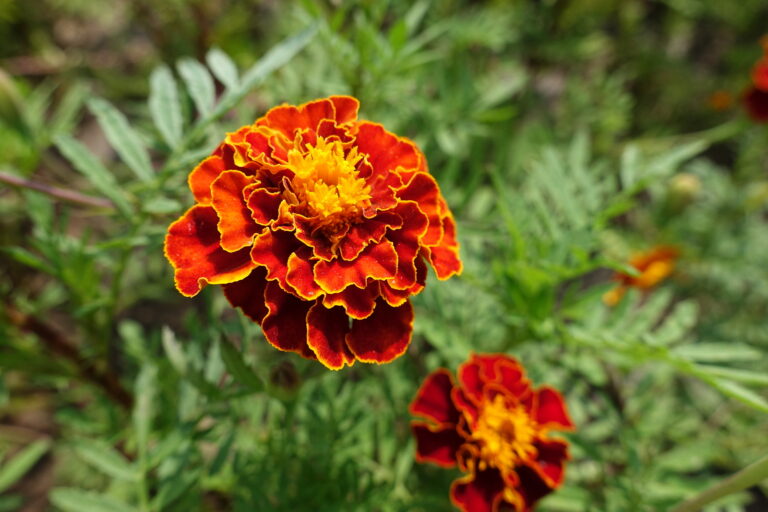Cucumber Flowering, Pollination, and Fruit Formation: Ensuring Maximum Yield
With more than 30 years of experience growing cucumbers, I’ve learned that understanding the flowering, pollination, and fruit formation processes is essential for a successful harvest. In this post, we’ll look at the key stages of cucumber growth, from the appearance of male and female flowers to the critical role of pollination in fruit development. I’ll share practical tips to help you ensure your cucumbers are properly pollinated, leading to a bountiful crop.
In cucumber plants, there are two primary types of flowering systems: monoecious and gynoecious. Monoecious cucumbers produce both male and female flowers on the same plant. The first flowers that appear are male, or non-fruiting, flowers, while female flowers typically follow 7 to 10 days later at the end of the shoots. These female flowers, which have a small cucumber-shaped swelling at the stem end, require pollination to develop into fruit. Most cucumbers are monoecious, and pollination usually occurs when insects such as bees transfer pollen from the male to the female flower. If you’re growing gynoecious cucumbers, which only produce female flowers, you’ll need a monoecious plant nearby for pollination, or you may need to pollinate the flowers by hand. Hybrid varieties, like ‘Conquest,’ ‘Early Pride,’ and ‘Bush Baby’, are typically gynoecious and require pollinator plants to thrive.
Cucumber flowering and fruit formation begins with the male flowers, which do not produce fruit. Female flowers, appearing about a week later, will have an immature fruit at the stem end. To ensure successful pollination, bees and other insects carry pollen from the male to the female flowers. If your garden lacks sufficient pollinators or you are growing cucumbers in a greenhouse where insects are absent, you can hand-pollinate using a soft-bristled brush. Gently collect pollen from a male flower and transfer it to the stigma of the female flower. For those growing cucumbers vertically on a trellis or support, the fruit will grow straight, while ground-grown cucumbers should be placed on a tile or wood to avoid contact with the soil, reducing exposure to disease and pests. Keep in mind that cool weather, heavy rain, or insecticides can delay or disrupt pollination, so it’s essential to monitor conditions and ensure your cucumbers get the attention they need to flourish.
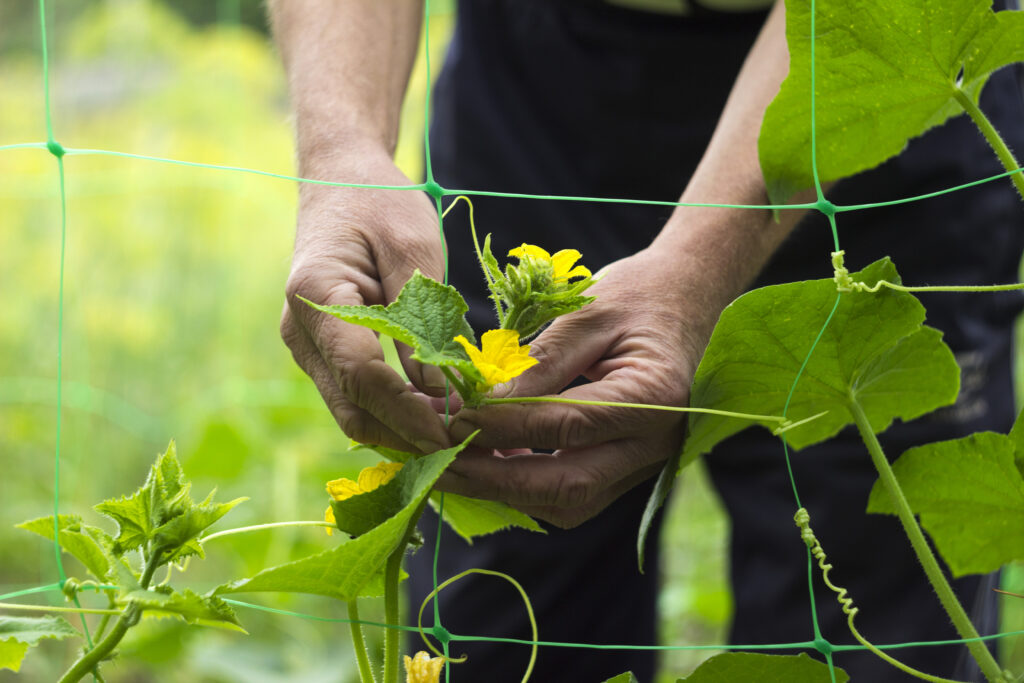
Monoecious and Gynoecious Cucumbers
Most cucumbers are either monoecious or gynoecious. Monoecious plants have both male and female flowers on the same plant; the first flowers that appear are male or non-fruiting; fruiting female flowers appear 7 to 10 days after at the end of shoots. Gynecious cucumbers have only female flowers. They require a male flower on a nearby plant for pollination. (Packets of gynoecious cucumber seeds commonly contain pollinator-plant seeds; these seeds will be color coated for identification.) Cucumbers are pollinated by visiting insects or birds. (Most cucumber varieties are monoecious.)
- Most cucumbers are monoecious, meaning plants produce both female and male flowers. Female flowers are commonly pollinated by insects after visiting male flowers.
- Hybrid cucumber varieties are gynoecious. Gynoecious cucumbers produce only female flowers. These plants must be set near a monoecious plant for pollination or must be pollinated by hand. Gynoecious cultivars include ‘Conquest,’ ‘Early Pride,’ and ‘Bush Baby.’
Cucumber Flowering and Fruit Formation
Understanding cucumber flowering and fruit formation is key to growing a healthy, productive crop. Cucumbers produce separate male and female flowers, and it’s important to know that the first flowers to appear will be male, which do not produce fruit. Female flowers typically follow a week later and can be identified by a small cucumber-shaped swelling at the stem end of the flower, signaling the unpollinated fruit. Pollination occurs when bees or other insects transfer pollen from male to female flowers. However, if your garden lacks sufficient pollinators or if you’re growing cucumbers in a controlled environment like a greenhouse, you may need to assist with hand-pollination. Additionally, while growing cucumbers vertically on a trellis can result in straight fruit, ground-grown cucumbers should be elevated to prevent contact with soil, minimizing exposure to disease and pests. By following these simple steps, you can ensure that your cucumbers are properly pollinated and ready to harvest.
- Cucumbers have separate male and female flowers. The first flowers to appear are male flowers that will not produce fruit.
- Female flowers appear a week or so after male flowers. A female flower will have a cucumber-shaped swelling at the stem end of the flower; this is the unpollinated fruit.
- Female flowers are pollinated when bees or other insects carry pollen from the male flower to the female flower. Some male flowers may die and drop before female flowers appear. Be patient or sow seeds every couple of weeks so that there are male and female flowers in the garden at the same time.
- To attract bees to flowers, spritz plants with dilute sugar water.
- If plants are in a greenhouse or hoop house where pollinating insects cannot come or if pollination is slow or does not occur, use a soft-bristled brush to hand pollinate flowers; dust the inside of a male flower then carefully dust the inside of a female flower. A female flower will have an immature fruit on its stem, a male won’t.
- Gynoecious, hybrid cucumbers require pollinator plants; monoecious plants with female flowers.
- Cucumber fruits hanging from a trellis or vertical support will grow straight under the force of gravity.
- Cucumbers growing on the ground should be set on a tile or piece of wood so that the fruit does not have direct contact with the soil; this will allow cucumbers to mature with less exposure to disease and insects.
- Cool-weather, rain, and insecticides can delay or harm pollination.
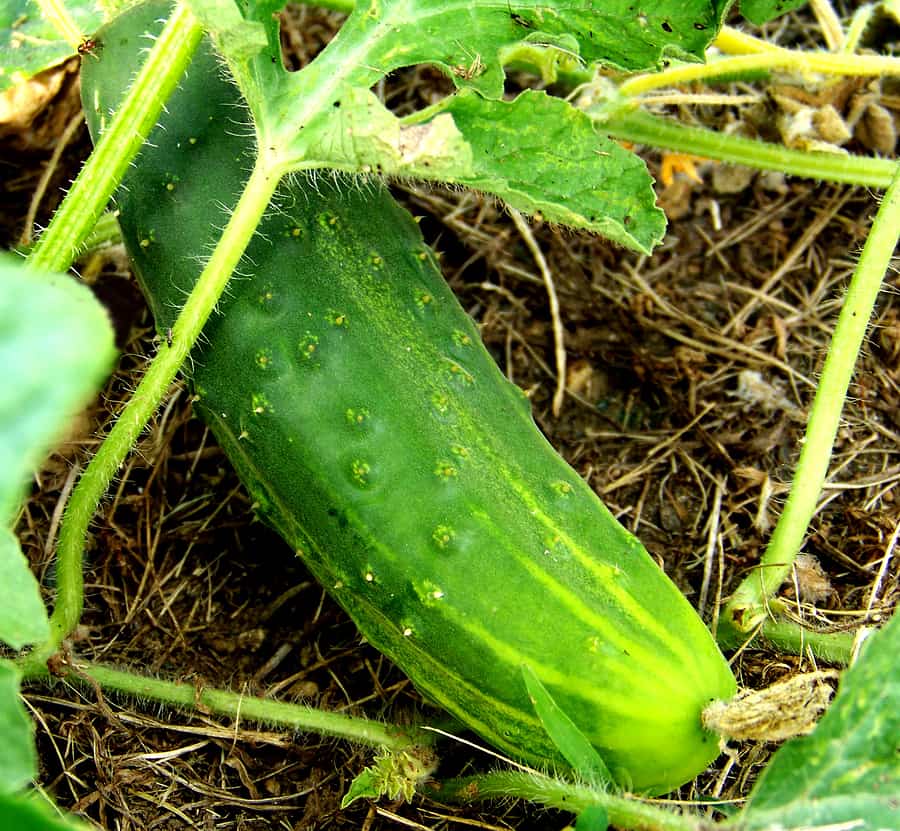
Attracting Pollinator to Cucumber Plants
Attracting pollinators to your cucumber plants is crucial for a healthy harvest, especially since cucumbers rely on insects like bees for successful pollination. Here are some of the best ways to encourage pollinators to visit your cucumber plants:
1. Plant Pollinator-Friendly Flowers
- Flowers such as sunflowers, zinnias, lavender, and marigolds are excellent at attracting bees and other pollinators. By planting a variety of flowers nearby, you provide a diverse food source that will draw pollinators into your garden.
- Focus on planting flowers that bloom at the same time cucumbers do, providing continuous food sources for the insects.
2. Use Companion Planting
- Certain plants, like borage, clover, and dill, are known to attract bees and other pollinators. These plants also benefit cucumber plants by improving the soil and deterring pests.
3. Provide a Water Source
- Pollinators need water too, especially on hot days. A shallow birdbath or small dish of water with some stones or marbles for landing can help keep bees and other beneficial insects hydrated.
4. Spray with Dilute Sugar Water
- To give your cucumbers an extra pollinator boost, dilute sugar water (1 teaspoon sugar in 1 cup of water) and lightly spritz it on the flowers. This will attract bees and other insects, encouraging them to stick around longer.
5. Create a Habitat for Pollinators
- Avoid using pesticides, as they can harm pollinators. Instead, focus on natural pest management practices.
- Leave some areas of your garden a bit wilder, with areas of bare ground or dead plant material, to create homes for native pollinators like ground-nesting bees.
6. Provide Shelter
- Pollinators need safe places to rest. Planting a variety of plants with different shapes and heights can offer natural shelter. You can also build bee houses or buy one to encourage solitary bee species to settle in your garden.
By creating a welcoming environment with a variety of flowers, a water source, and careful management of pests, you’ll help ensure that pollinators visit your cucumber plants, leading to better fruit set and a more abundant harvest.
Cucumbers Can Be Hand Pollinated
Cucumbers can be hand-pollinated, especially when natural pollinators like bees are scarce or if you’re growing cucumbers in a controlled environment like a greenhouse. Hand pollination is particularly important for gynoecious cucumbers, which produce only female flowers and need pollen from a male flower to develop fruit. Monoecious cucumbers, which produce both male and female flowers, may also benefit from hand-pollination if pollinators are not readily available.
How to Hand Pollinate Cucumbers:
- Identify Male and Female Flowers: The first flowers to appear are usually male flowers. Female flowers will have a small cucumber-shaped swelling at the base of the flower, which is the immature fruit.
- Collect Pollen from Male Flowers: Using a soft-bristled brush (or even your finger), gently collect the pollen from the male flower. Male flowers are typically larger and located at the end of a long stem.
- Transfer Pollen to Female Flowers: Carefully transfer the pollen to the stigma (center part) of the female flower. A female flower will have a swollen base, which is the unpollinated fruit.
- Repeat as Needed: Pollinate several female flowers to ensure a good fruit set.
If you’re growing gynoecious cucumbers, make sure to plant a monoecious cucumber nearby to provide male flowers for pollination, or you’ll need to hand-pollinate each female flower.
Hand-pollinating cucumbers can be a bit time-consuming, but it ensures that your plants produce fruit, especially when natural pollination conditions are not ideal.
Related Posts:
Ultimate Beginner to Expert Guide to Growing Cucumbers
Planning and Planting
- The Best Cucumber Varieties for Your Garden
- How to Plant Cucumber Seeds and Seedlings: Site, Spacing and Soil Needs
- Growing Cucumbers in Containers: Space -Saving Tips for Success
Care and Maintenance
- Watering, Feeding, and Caring for Cucumbers: A Complete Guide
- How and When to Prune Cucumbers for Healthier Vines
- How to Grow Cucumbers That Are Not Bitter Tasting
- Cucumber Flowering, Pollination, and Fruit Formation: Ensuring Maximum Yield
Troubleshooting and Pest Control
Harvest and Beyond

